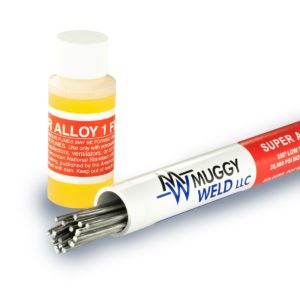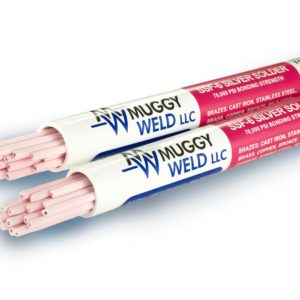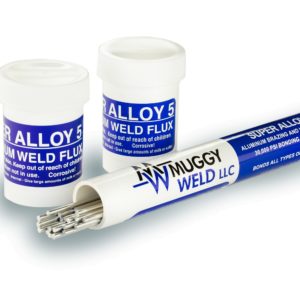Tips for Welding Cast Iron with 72 and 77 Cast Iron Welding Electrodes
Transcription:
Good afternoon, YouTube. My name is Brandon and today we’re going to be doing a bunch of welding on some cast iron and we’re going to be doing some testing with it. It should be really interesting, stick around.
Welcome back, guys. Recently I uploaded a video titled “Stick Welding Cast Iron with Muggy Weld” — that video sparked a little bit of controversy because many of the viewers were saying that’s not cast iron that I was welding, that it was actually cast steel. Well, we’re gonna dig into that today. We’re going to do a bunch of welding and talk about cast iron and talk about its properties. If you remember, I actually spark-tested that piece in the video, so let’s get going. Let’s do some welding and see what we can figure out.
Let me get you up to speed. We spark-tested this exhaust manifold and the spark test proved to be cast iron. We then simulated a crack by cutting a roughly 3 1/2 inch long cut in it. We stop drilled it. I then did a root pass with the 72 cast iron rod and I capped it with the 77 rod. After I capped it and filled it, then I ground it flush so I could simulate a complete repair. If we wanted to we could sand blast the part down, paint it–whatever we needed to do. But the idea was to see how seamless of a repair we could do. Within that there is a damaged area so I think what we are going to do now is start out our testing by cutting a piece and look at the back side of the weld and see how it looks.
And additional way to identify the piece as cast iron would be to drill it. When you drill cast iron, it will produce a chip in the material that is completely different than steel. Cast iron will produce and almost “graphitey” material. And another way of checking it for cast iron is after you weld it, cast iron will really harden. It gets super tough, it responds completely different than steel.
Here we have our cut out piece. That’s where our repair was. So you can see that’s where we stop drilled it, there and there. And you can see how the root pass made it all the way to the back side. I say the next thing we do is cut that right through the center of that joint and see how it looks.
So when I tell you that cast iron hardens up into the heat affected zone when you weld it, you’re going to see a perfect example of this. Right here it’s going through really well where it starts but now I’m into the heat affected zone, I’m into that area where we put that slice on it and then we started welding it. This does not want to cut through it at all. You’ll see that this is so hard that I end up breaking the blade and had to replace the blade to get through the piece. It is super tough and unfortunately that’s kind of what cast iron does when you work on it.
Just so you guys don’t think I’m tampering with it, those are the saw marks where I was trying to cut into the piece. I am going to hit this with a file and clean it up so you can see it smoother. I highlighted with a white sharpie on the back so you can see where the weld is. I don’t see any flaws, I just know it’s really hard. Let’s try to break the weld.
So I have the cut line aligned with the jaws of the vice and I think the best way to try to break this is an adjustable, maybe. Surprisingly it looked like it might have cracked a little along the weld, but then it strayed off and took off some of the parent metal beside the weld and never traveled over to where we stop drilled it. Were we really surprised it broke? Cast iron is brittle and the rod designed to weld it up probably should have similar properties to the parent metal it’s welding.
I still don’t see any issues, that looks like parent metal that it ripped apart. I do not see any issues with this weld at all.
Thank you, Brandon for allowing Muggy Weld to feature your video on our site. Please subscribe to Brandon’s welding channel using the following link:
Note: Please observe all AWS Safety & Health Guidelines when using Muggy Weld products.



